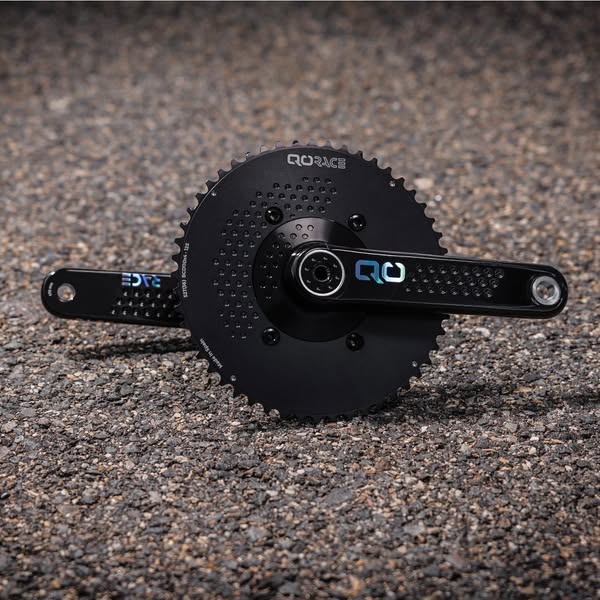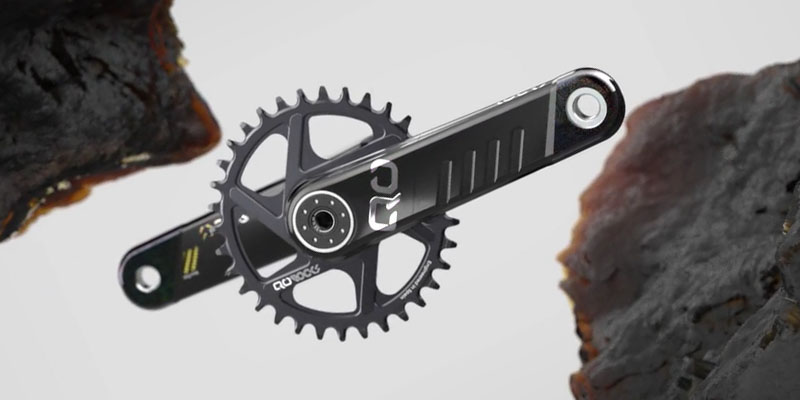A high-performance bicycle consists of essential components that enhance speed, control, and efficiency. Key parts include the lightweight frame and fork for stability and aerodynamics, handlebars and saddle for control and comfort, and wheels designed for traction and reduced drag. The drivetrain, with crankset, chain, cassette, and derailleur, ensures smooth power transfer. Brakes offer safety and precision, while the power meter provides real-time data on rider effort, essential for optimizing training and maximizing competitive performance.

- Frame
The frame is the bicycle’s backbone, defining its geometry, stiffness, and aerodynamics. Made from materials like carbon fiber, aluminum, or titanium, it influences weight and power transfer. In high-performance bikes, the frame must be lightweight yet strong to endure high speeds and stress. An aerodynamic design reduces wind resistance, essential for competitive cyclists. The frame geometry also affects comfort and pedaling efficiency, determining how well the bike fits the rider. A well-designed frame enables both speed and stability, making it a critical component for serious cyclists. - Fork
The fork holds the front wheel and enables steering. In high-performance bicycles, forks are often made from carbon fiber to reduce weight and improve vibration dampening. The design of the fork affects handling and stability, essential factors in competitive racing. A stiff fork enhances handling precision at high speeds, while also absorbing road vibrations to strike a balance between control and comfort. Many high-end forks are aerodynamically optimized to reduce drag, especially useful in time trials and fast-paced riding. - Handlebar
The handlebar is key for control and stability. High-performance handlebars are lightweight and aerodynamic, often made of carbon fiber to minimize weight and absorb vibrations. Their shape, such as drop bars for road bikes or flat bars for time trials, allows various hand positions, enhancing aerodynamic efficiency and comfort on long rides. The handlebar’s ergonomics are crucial for maintaining control on curves and during precise maneuvers, while a well-designed shape reduces fatigue, enabling better performance on long, demanding rides. - Saddle
The saddle is vital for rider comfort, especially on long rides. High-performance saddles are designed to be lightweight and anatomically optimized, made from materials like carbon and leather. Its shape reduces pressure on key contact points and improves circulation to the legs. Saddle height and angle directly affect pedaling efficiency and weight distribution, impacting comfort and overall performance. A well-fitted saddle enables an efficient and comfortable riding position, preventing injury and maximizing exertion during rides. - Seatpost
The seatpost holds the saddle and allows height adjustments, crucial for adapting the bike to the rider. On high-performance bikes, seatposts are often made from carbon fiber to reduce weight and absorb vibrations. The seatpost may have an aerodynamic design to reduce drag, especially in time trial and triathlon bikes. Adjustable seatposts allow the rider to find the ideal pedaling position, improving power transfer and minimizing fatigue. An optimal position boosts comfort and maximizes efficiency during cycling. - Crankset
The crankset connects the pedals to the central axis, transferring the rider’s power to the chain. In high-performance bikes, cranksets are crafted from lightweight, durable materials like carbon or aluminum to maximize power transfer without adding extra weight. Crank length affects torque, influencing pedaling efficiency. As a critical component for speed and power, the right crankset choice allows optimal pedaling and ensures that the rider’s effort translates efficiently into forward motion. - Chain
The chain connects the crankset to the cassette, transferring power from the pedals to the rear wheel. In high-performance bikes, chains are optimized to minimize friction and enhance durability, made from lightweight yet robust materials. A well-maintained and lubricated chain ensures smooth power transmission without losing efficiency. Any chain malfunction directly impacts speed and performance, making it essential for overall drivetrain efficiency in competitive conditions. - Cassette
The cassette is a set of gears on the rear wheel that allows shifting and adapts pedaling to various terrains. High-performance cassettes are lightweight and facilitate smooth, precise shifts, essential for racing and climbing. Smaller gears maintain high speeds on flat terrain, while larger gears make climbing easier. A well-chosen cassette, paired with an efficient shifting system, enables the rider to maintain an optimal cadence on diverse terrain, maximizing power and efficiency. - Derailleur (Shifting System)
The derailleur allows the rider to switch between different gears on the cassette and chainrings. In high-performance bicycles, derailleurs are electronic or high-precision mechanical, ensuring fast, smooth shifting. Efficient shifting allows the rider to maintain a consistent cadence, avoiding fatigue and maximizing power on variable terrain. The derailleur’s speed and precision are crucial in racing, enabling the cyclist to adapt to terrain or speed changes without losing momentum. - Wheels
Wheels are fundamental for the bike’s speed and stability. In high-performance bicycles, wheels are often made from materials like carbon fiber, which reduces weight and improves aerodynamics. Rims and spokes are designed to minimize wind resistance, while tires are profiled to maximize traction and reduce friction. Wheels impact acceleration and the ability to maintain high speeds, making them crucial in competition. Lightweight and aerodynamic wheels enable quicker response and better control. - Brakes
Brakes provide the necessary control and safety, especially at high speeds. Disc brakes, common in high-performance bikes, offer more precise and consistent braking, even in wet conditions. These brakes are designed to minimize response time and maximize braking power without affecting stability. Brake performance is essential to adapt quickly to sudden changes, allowing the rider to stop safely and efficiently in any situation. - Power Meter
The power meter measures the power generated by the rider during pedaling, expressed in watts. This device is crucial in high-performance cycling as it allows the rider to monitor and adjust their effort in real-time, improving efficiency and optimizing training. By measuring power output, the rider can adjust intensity based on terrain, desired pace, and energy reserves. Power data analysis is essential for developing personalized training strategies and maximizing competitive performance.


